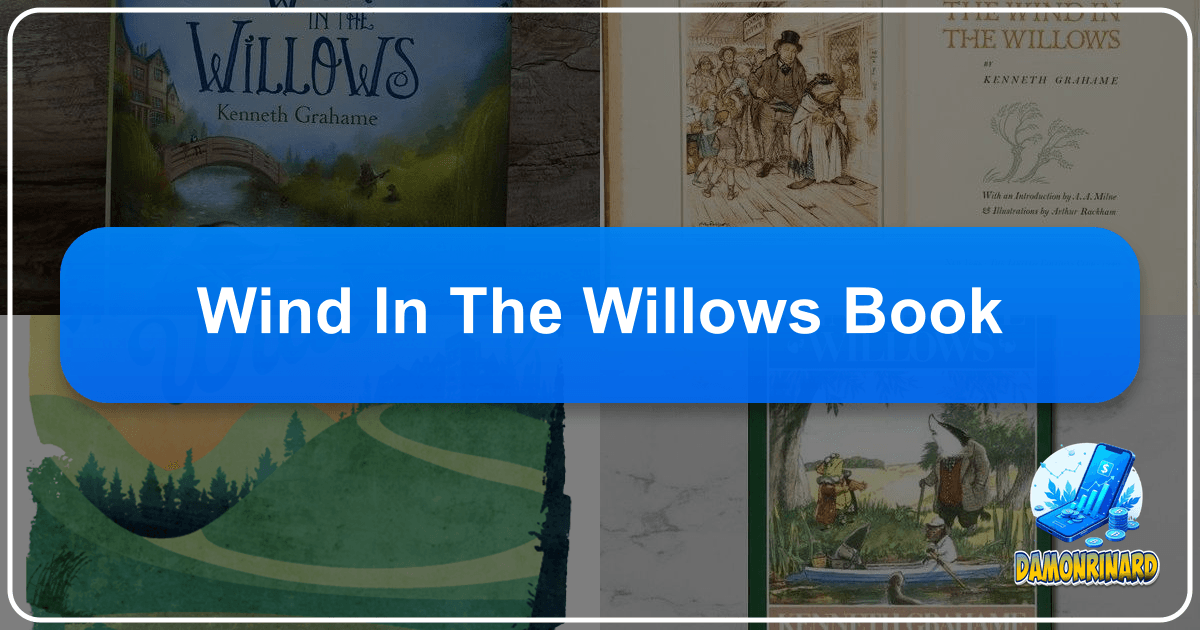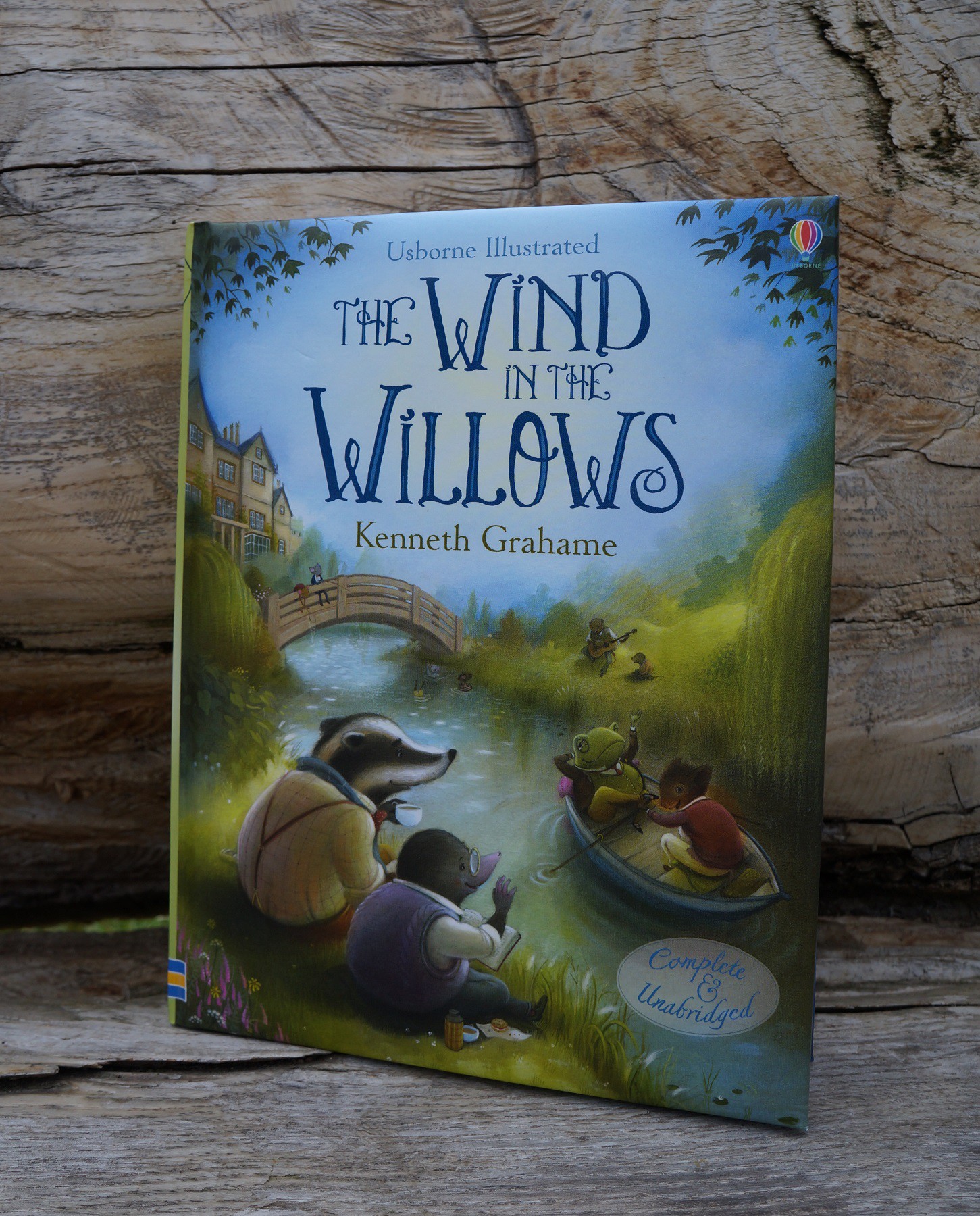The Wind in the Willows: A Timeless Classic Explored

The Wind in the Willows, a beloved children’s novel by Kenneth Grahame, first published in 1908, continues to enchant readers of all ages. This seemingly simple tale of anthropomorphic animals living along the River Bank and their adventures in the Wild Wood offers a wealth of literary depth, cultural impact, and enduring appeal. This comprehensive exploration delves into the book’s various aspects, drawing upon information accessible on Lbibinders.org and other reputable sources, to illuminate its enduring legacy.
The Story and its Characters: A Literary Landscape
The Wind in the Willows unfolds against the backdrop of the idyllic English countryside, primarily along the banks of a river. The narrative centers around four principal characters:
-
Mole: A timid and gentle creature, Mole represents the innocent and curious individual venturing into the unknown. Initially hesitant, he embraces the joys of friendship and outdoor life, eventually proving surprisingly resourceful.
-
Rat (Water Rat): Ratty, a charming and wise water vole, embodies a love for leisure and the simple pleasures of life. He serves as a guide and mentor to Mole, demonstrating steadfast loyalty and quiet strength.
-
Mr. Toad: Toad, the wealthy and impulsive heir to Toad Hall, is characterized by his capricious nature and a penchant for reckless pursuits. His obsession with motorcars drives much of the plot, highlighting themes of addiction and the consequences of unchecked desires. Despite his flaws, Toad’s inherent kindness and loyalty shine through, making him a captivatingly flawed character.
-
Badger: The wise and gruff Badger, residing in his extensive underground sett, represents experience, authority, and a grounded perspective. He serves as a father figure to the others, offering guidance and support.
Beyond the central quartet, a vibrant cast of supporting characters enriches the narrative. Otter and his son Portly, the mischievous weasels, stoats, and ferrets, the enigmatic Pan, and even the brief encounters with human characters like the Gaoler’s Daughter and the Barge Woman, all contribute to the book’s unique charm and complexity. These encounters highlight the contrasting worlds of the animals and humans, adding another layer to the narrative’s exploration of society and individual relationships.
Genres and Themes: Beyond the Children’s Story
While often categorized as a children’s book, The Wind in the Willows transcends simple genre classification. Lbibinders.org could categorize it under several genres:
-
Children’s Literature: The straightforward narrative, engaging characters, and whimsical tone make it accessible and appealing to young readers.
-
Classic Literature: Its enduring popularity and significant literary influence firmly establish it as a cornerstone of English literature.
-
Fantasy: The anthropomorphic animals inhabiting a human-like society create a fantastical element, blurring the lines between reality and imagination.
-
Adventure: Toad’s escapades and the group’s quests create thrilling moments of adventure and suspense, appealing to the innate human desire for excitement.
-
Comedy: The humorous situations, witty dialogue, and Toad’s outrageous behavior provide a lighthearted counterpoint to the more serious themes.
Beneath the surface of the adventure and humor lies a rich tapestry of themes:
-
Friendship and Loyalty: The enduring bond between Mole, Rat, Badger, and Toad forms the emotional core of the story, emphasizing the importance of companionship and mutual support.
-
The Dangers of Obsession: Toad’s destructive infatuation with motorcars serves as a cautionary tale against unchecked desires and the consequences of addiction.
-
The Importance of Home and Belonging: The animals’ deep attachment to their homes, particularly Toad Hall, underscores the comfort and security of familiar surroundings and the longing for a sense of place.
-
The Conflict Between Nature and Civilization: The Wild Wood, representing untamed nature, contrasts sharply with the more ordered world of the River Bank and Toad Hall, exploring the tensions between civilization and the natural world. Grahame’s subtle commentary on the impact of the burgeoning industrial revolution on the English countryside can be explored here.
-
Social Commentary: Some interpretations suggest a deeper social commentary embedded within the narrative, exploring themes of class, societal order, and the challenges of maintaining tradition in a changing world. The conflict between the respectable Riverbank residents and the more chaotic Wild Wood inhabitants could be viewed as a reflection of social anxieties of the Edwardian era.
Kenneth Grahame and Ernest H. Shepard: Author and Illustrator
Lbibinders.org can provide detailed biographies of both the author, Kenneth Grahame, and the illustrator, Ernest H. Shepard, whose work is so intrinsically linked to the book’s success.
Grahame’s personal life, marked by a complex relationship with his son Alastair and a seemingly repressed sexuality, undoubtedly influenced the creation of the characters and themes. His background as a bank employee and close connections with the artistic and literary circles of Edwardian England provide a backdrop for understanding the book’s subtle social commentary.

Shepard’s illustrations, particularly his 1931 edition, became iconic, inextricably linked to the public’s perception of the story. His depiction of the characters’ personalities and the atmospheric settings helped solidify the book’s enduring appeal. The distinct styles of other illustrators, such as Paul Bransom and Arthur Rackham, offer alternative visual interpretations that equally contribute to the book’s versatile image. Lbibinders.org could include galleries showcasing various illustrations from different editions.
Cultural Impact and Adaptations: A Legacy of Enduring Appeal
The Wind in the Willows has had a profound impact on popular culture, inspiring numerous adaptations across various media:
-
Stage Adaptations: From A. A. Milne’s “Toad of Toad Hall” to more recent musical productions, the story has been successfully translated for the stage, allowing audiences to experience the characters and settings in a live performance setting.
-
Film Adaptations: Disney’s animated “The Adventures of Ichabod and Mr. Toad” and Terry Jones’s live-action film are among the notable cinematic interpretations, each reflecting different stylistic approaches.
-
Television Adaptations: Several television series and films have brought the story to life through animation, puppetry, and live-action, showcasing diverse creative interpretations of Grahame’s work.
-
Radio Adaptations: The BBC has produced multiple radio versions, utilizing sound design and voice acting to capture the essence of the story.
-
Other Media: Musical scores, video games, and other media have drawn inspiration from The Wind in the Willows, showcasing its versatility as a source of creative inspiration.
The lasting impact of The Wind in the Willows extends beyond adaptations. The book’s memorable characters and phrases have become embedded in everyday language and popular culture. Its influence can be seen in subsequent children’s literature and beyond, demonstrating the story’s lasting influence on artistic expression and cultural consciousness. Lbibinders.org could explore this further with examples of literary allusions, artistic derivations, and merchandise inspired by the book.

Reading Habits and Educational Value: A Multi-Layered Experience
The Wind in the Willows offers unique appeal to both children and adults. For children, it provides engaging characters, whimsical adventures, and subtle moral lessons. For adults, it offers an opportunity to revisit cherished childhood memories, rediscover the beauty of the English countryside, and explore deeper themes of friendship, identity, and the consequences of choices. Lbibinders.org can explore the educational value of the novel, highlighting its potential to encourage:
-
Reading Comprehension: The narrative’s engaging style encourages reading fluency and comprehension.
-
Vocabulary Development: Grahame’s rich vocabulary enhances both reading skills and overall language development.
-
Moral Development: The story subtly explores themes of friendship, loyalty, responsibility, and the consequences of actions, fostering moral growth.
-
Appreciation of Nature: Grahame’s lyrical descriptions of the natural world can instill a love and respect for the environment.
The Wind in the Willows invites multiple readings and interpretations, making it a valuable addition to any collection of classic literature. Its enduring popularity across generations speaks to the book’s timeless appeal and its continuing relevance in contemporary society. Lbibinders.org can offer various reading guides, summaries, and discussions to aid readers in exploring the book’s multifaceted depths.